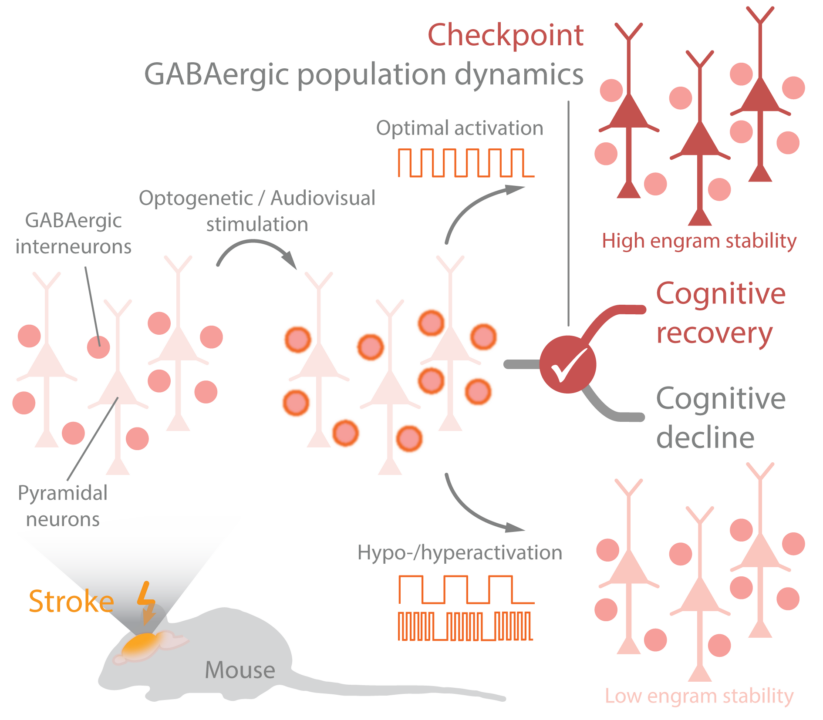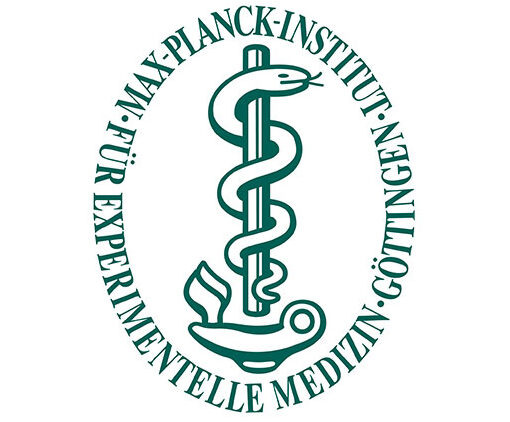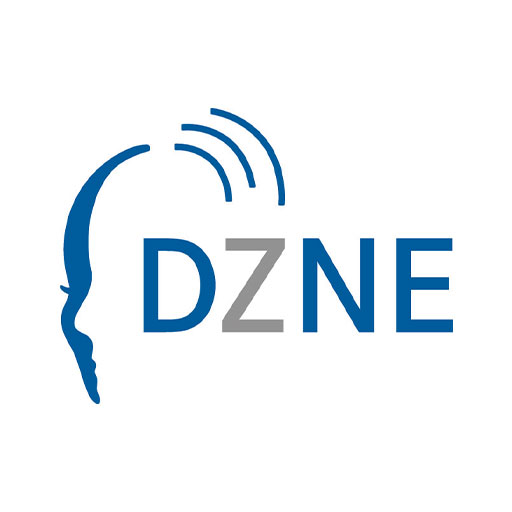Background: Strokes impair orchestrated GABAergic interneuron activity in the hippocampus, which is important for memory encoding and retrieval.
Hypothesis: We hypothesize that identifying and modulating patterns of GABAergic population dynamics are important checkpoints to promote functional and structural rewiring of pyramidal neurons in the hippocampus after stroke, preventing cognitive decline.
Strategy: We will perform chronic 2-photon calcium imaging in the hippocampus of active mice assessed in a memory task, together with optogenetics and neuronal tracing strategies to characterize functional and structural rewiring of pyramidal neurons in relation to population dynamics of GABAergic interneuron activity. GABAergic population activity is first monitored in health and after stroke and then modified, either by optogenetics or audiovisual stimulation.

Summary
Stroke is a major cause of adult disability and death worldwide, with patients not only suffering from sensorimotor impairment, but also cognitive decline. As the neurobiological mechanisms behind the cognitive decline are not understood, there is no specific therapeutic regimen for these patients till today. A key area of interest for processing memory function and cognition is the hippocampus, which is known to be highly vulnerable to even remote ischemic events, while the reasons for this high vulnerability of ischemic damage remain elusive. As the hippocampus is a relay station for memory circuits and very well connected to different cortical and subcortical areas, one hypothesis suggests, that strokes reduce the excitatory input, leading to a GABAergic imbalance and disrupted organization of GABAergic activity in gamma oscillations, which are important for memory consolidation and retrieval. To shed light on these pathomechanisms leading to cognitive decline, we propose here to identify (Aim ❶) and modulate (Aim ❷ and ❸)checkpoints of GABAergic population dynamics shaping microcircuits of excitatory pyramidal neurons to induce functional and structural rewiring processes. We will apply our recently developed micro-stroke model, which allows us to concurrently study GABAergic interneuron population activity together with the activity of individual pyramidal neurons in CA1 of the hippocampus over several weeks during learning of a spatial navigation task and after micro-stroke induction. We will first (Aim ❶) characterize functional rewiring of surviving pyramidal neurons in relation to GABAergic population dynamics, concerning their stable coding e.g. for place fields and the cognitive performance of the mice. On the structural rewiring level, we will map modifications of presynaptic inputs and local reorganization of pyramidal neurons using tracing techniques to reveal structural reorganization patterns depending on altered GABAergic population dynamics after stroke. We will then modulate and synchronize GABAergic interneuron activity using direct optogenetic manipulation (Aim ❷) or non-invasive audiovisual stimulation (Aim ❸) to assess if functional and structural rewiring of pyramidal cells in CA1 can be promoted in such a way that cognitive decline can be prevented. Preliminary data indeed show, that audiovisual stimulation at 40Hz is capable to rescue cognitive decline in our micro-stroke model, suggesting the systematic modulation of GABAergic interneuron activity as important checkpoint for neuronal circuit formation and refinement after CNS injury.





